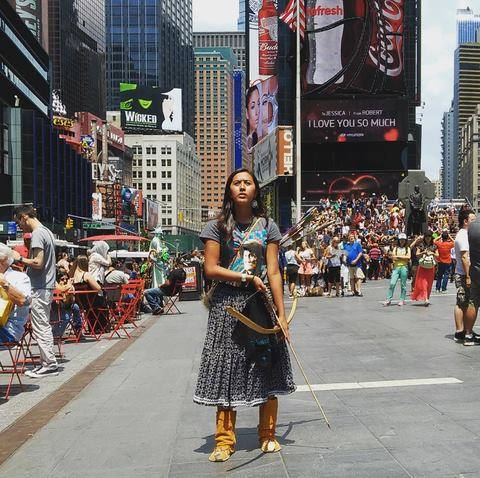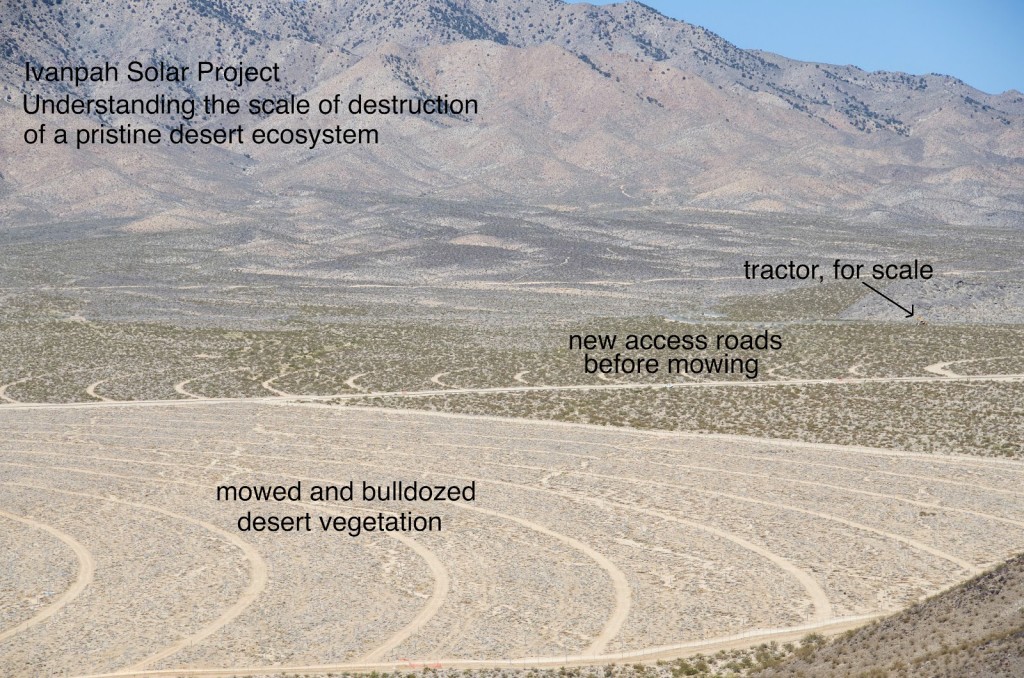by Todd Miller / nacla

A Border Patrol Checkpoint (Flickr)
It was a typical scene for many on the Tohono O’odham Nation: a Border Patrol agent pulled behind us in a green-striped vehicle after we had stopped to check directions. We were a group of five people in two cars. We had no idea what they wanted. Documentary filmmaker Adam Markle was going to interview tribal member Joshua Garcia at the San Miguel border gate, only a mile away. It was October 12, Columbus Day, a fitting date to be on the land of the Tohono O’odham.
The agents were about to give us a taste of what the American Civil Liberties Union of Arizona described in extensive detail in a new report. It says that Border Patrol practices along this 2,000-mile border have become “de facto stop and frisk.” It also asserts that this border Native American reservation, which hugs the U.S.-Mexico boundary and is only a fraction of its original land, has become a prototype of a “modern day police state.”
After stepping out of the car to briefly speak to Markle, I looked back at the agent who had his radio up to his mouth and was mumbling some unintelligible code. Dressed in a forest green Border Patrol uniform, he had a crew cut and sunglasses. The cloth name badge on his shirt said Kozma. Behind him in the distance was the sacred Baboquivari peak, on the edge of the Nation. Since the lights on his vehicle were not flashing, I asked him if he was detaining us. His response was not clear, but I thought I heard “You can go ahead.”
I walked back towards the other car.
Kozma yelled, “Stop! I told you to. Stay. There.”
I looked at him. “I thought—”
“Get there,” he yelled pointing to the driver’s door of Markle’s car, “by the door. You disobeyed my order.” I noticed his hand was on the black handle of his holstered gun.
“I misheard you,” I said.
“Stay there,” he snapped.
At this point two more Homeland Security vehicles with their sirens blaring pulled in fast as if this were the moment everybody had been waiting for. When Kozma walked back towards his truck, his hand was still on his gun.
Minutes earlier we had been driving down what deceivingly seemed like a lonely two lane road to do the basic journalistic task of conducting an interview.
However, things can change rapidly in the United States’ 100-mile-wide border enforcement jurisdiction. Here, the Department of Homeland Security (DHS), within which the Border Patrol is located, operates with extra-constitutional powers and a counterterror mission that prepares agents to be at war. The constant presence of these heavily armed U.S. federal agents has completely changed life on “the rez.”
It wasn’t always this way. When Joshua Garcia, a member of the Tohono O’odam Hemajkan Rights Network (TOHRN) was growing up in the nearby Chukut Kuk district, there were a few agents. But the O’odham moved unencumbered and crossed freely back and forth over the international boundary on their traditional lands, which extend hundreds of miles into Mexico, to go to school, go to the clinic, visit family and friends, and to see sacred sites.
Garcia remembers when it all changed. There was a night in the mid-1990s when he looked over the western horizon, over the reservation, and saw the sky light up, filled with helicopters and aircraft.
“It was like Red Dawn,” he laughed, referring to the 2012 movie that ridiculously depicts the invasion of the United States by the North Korean military.
Garcia said that he always associated that night with an incident that happened three days later. Border Patrol agents showed up at his aunt’s house. They said they were tracking footprints into her yard. Was she hiding anybody in the house? She told them that they were the footprints of the children, trick-or-treating, from Halloween.
Now the number of Border Patrol agents has gone from few and far between to, as put by tribal member Mike Wilson, an “occupying army.” Garcia says that “it feels like you’re being watched, all the time” on the Nation. According to the ACLU report, the Nation has become “inundated” with Border Patrol infrastructure. Indeed, the reservation today feels like the location of a post-9/11 Indian war, a collision of centuries.
Less than a mile from where we stood, detained in the hot sun, is a substation that the Border Patrol shares with the Tohono O’odham police department. Scope trucks dot the hills, implanted motion sensors monitor foot movement, and surveillance cameras can see at night and during the day. Drones and helicopter do frequent overflights, and I’ve witnessed heavily armed border agents dressed in camouflage patrol the sacred Baboquivari mountain range in search, they say, of smugglers. On the other side of the reservation, which is the size of the state of Connecticut, is a Forward Operating Base, much like the small, rudimentary bases used in U.S. war zones.
Around the periphery of the reservation are DHS checkpoints, placed so that you can’t avoid them if you leave the reservation on a paved road. This is a second, internal layer of border enforcement.
For the O’odham the movement of everyday life has become rife with difficulties. According to the ACLU report, agents brandishing weapons during normal traffic stops on the reservation is now routine. Agents have stopped and detained a school bus “more than a dozen times.” Each time Border Patrol forces the students to stand out in the heat as they rifle through their personal belongings. One family said that the agents pulled them over after they returned home to retrieve a forgotten item, apparently a “suspicious” act.
Over the years, I have heard stories from many people, most who wish to remain anonymous. I have heard about a Tohono O’odham health worker who Border Patrol pulled over after she picked up patients to transport them to a dialysis center. I have heard about Border Patrol blocking a funeral procession and then showing up at the cemetery during the burial. I have heard about Border Patrol using this burial ground (and other sacred places) as a shooting range and driving all over it with ATVs. A man told me that he was simply driving north from the international divide when Border Patrol pulled him over, and six agents surrounded him armed with automatic, high-caliber weapons. He never learned what it was that set them off.
I interviewed a man named Arturo Garcia who said Border Patrol pulled him out of his car, pepper-sprayed him, and then knocked him out with a crack of a baton.
Tohono O’odham Nellie Jo David, a student of indigenous peoples law and policy, also a member of TOHRN, put it this way: “We can’t visit family, go to the store, attend meetings, participate in our culture, grab a bite somewhere, or say hi to our friends without being accused of something… It is NOT their land. They should NOT have this unfettered power. I’m willing to fight for as long as I live to get that message across.” What David describes is strikingly reminiscent to internal controls of mobility in the Israeli-occupied West Bank. The comparison is not a stretch: the private company Elbit Systems, the lead system integrator of Israel’s border technology plan, is poised to build 15 surveillance towers on the Tohono O’odham Nation in 2016.
While Border Patrol presence is particularly striking on the reservation, the ACLU lists off what they call “rampant civil rights abuses” that are occurring throughout the 2,000-mile stretch of borderlands: everything from tailgating at high speeds, to wielding weapons such as knives, electroshock guns, and assault weapons during routine traffic stops.
Using cases from heavily redacted documents obtained from Customs and Border Protection (the parent agency of the Border Patrol), the ACLU alleges that agents’ “violent, reckless, and threatening” conduct is not that of just a few bad apples. It is the routine behavior of this Homeland Security force, which is the only agency permitted by law to use a person’s ethnicity as a reason to pull someone over. When the Obama administration issued new rules in attempt to curtail racial profiling, the one huge exception was homeland security operations. As one DHS official told the New York Times, “We can’t do our job without taking ethnicity into account. We are very dependent on that.”
This verbally and sometimes physically abusive routine conduct of the U.S. Border Patrol, according to the report, is not limited just to the reservation. In one case, a Border Patrol agent told a woman to “put the fucking keys in the truck” at an interior checkpoint west of Tucson after a false canine alert. When she objected to the language, the agent responded by saying “I can talk to you any fucking way I want.” The agent then explained to his supervisor that he felt a “more forceful approach was needed in order to convey her need to follow my direction.”
In another incident, a woman asked why the Border Patrol detained her in Tucson, sixty miles from the border, when she was driving in her car to drop off her two children at school in March 2011. The agents first told her that her Ford Expedition “was running low,” and then, “we’ll think of something.”
When I asked Border Patrol Agent Kozma why we were being detained, he did not answer. He might have been distracted, alas, because another agent, Rodriguez, was walking in his direction.
Moments later Rodriguez called me over to his vehicle. He told us we couldn’t be on Tohono O’odham land without the permission of the tribal government. He called over Markle, and then took both our identifications. He looked at us and said, “This is not an abuse,” as if he were simultaneously sick of and worried about the subject matter. He asked why we were in this area, only “a mile from the border.” It wasn’t safe, he told us. There had been a lot of crossings. You are “unarmed,” he said, we can’t protect you.
The agent then asked me why I had approached Kozma “aggressively.” I was so startled by Rodriguez’s assertion that I laughed. “I didn’t approach him aggressively,” I replied. Kozma quickly shot back saying that I had not obeyed his orders. (Fifteen minutes later Kozma would yell at me again when I attempted to retrieve a water bottle from the vehicle. “I don’t know what you have in the car,” he told me).
Then, almost following the script of the ACLU report, the agent said that Markle’s California plate was suspicious. Rodriguez told us that when they saw a California plate, it was “either someone running stolen cars or drugs.” That’s why they had to pull us over.
This whole thing ended when J. Scott, who was a tall, white police agent from the Tohono O’odham Police Department – one of many such non-O’odham in the force – told us we had to leave the reservation. He said if he caught us filming he would arrest us for “trespassing.” When Garcia stepped forward and explained that he was Tohono O’odham, from the Chukut Kuk District, J. Scott told him he was not from that district. The insinuation was clear: even within the reservation movement is controlled and suppressed. Scott and the Border Patrol vehicles “escorted” us away from the border, from the land of Garcia’s grandparents going back at least a thousand years. That Columbus Day on the Tohono O’odham Nation it didn’t only seem like the Nation was living only in a state of “de facto stop and frisk,” but also in a continued state of Manifest Destiny.
Todd Miller is the author of Border Patrol Nation: Dispatches From the Front Lines of Homeland Security. You can follow him on Twitter @memomiller and view more of his work at toddwmiller.wordpress.com.
Article originally published November 25, 2015 on nacla







